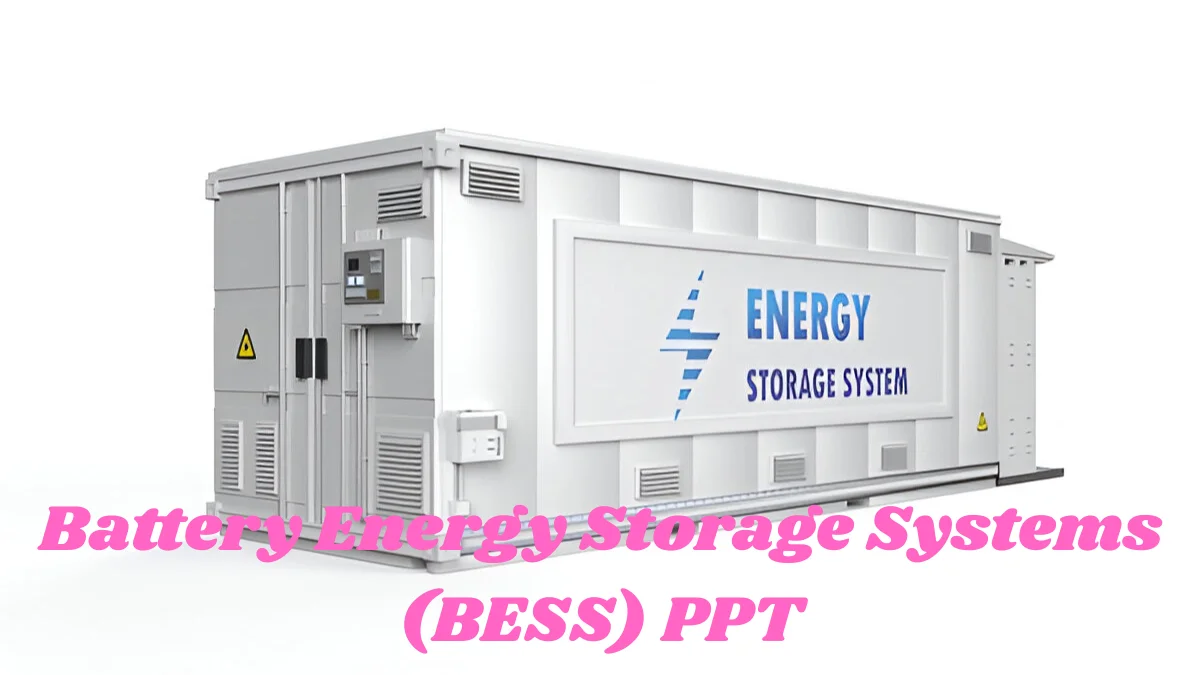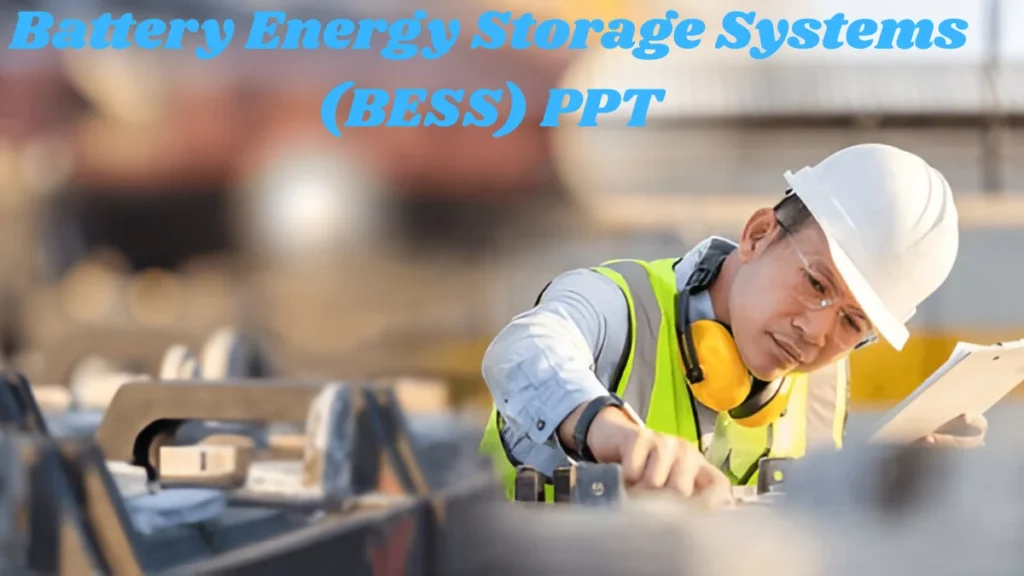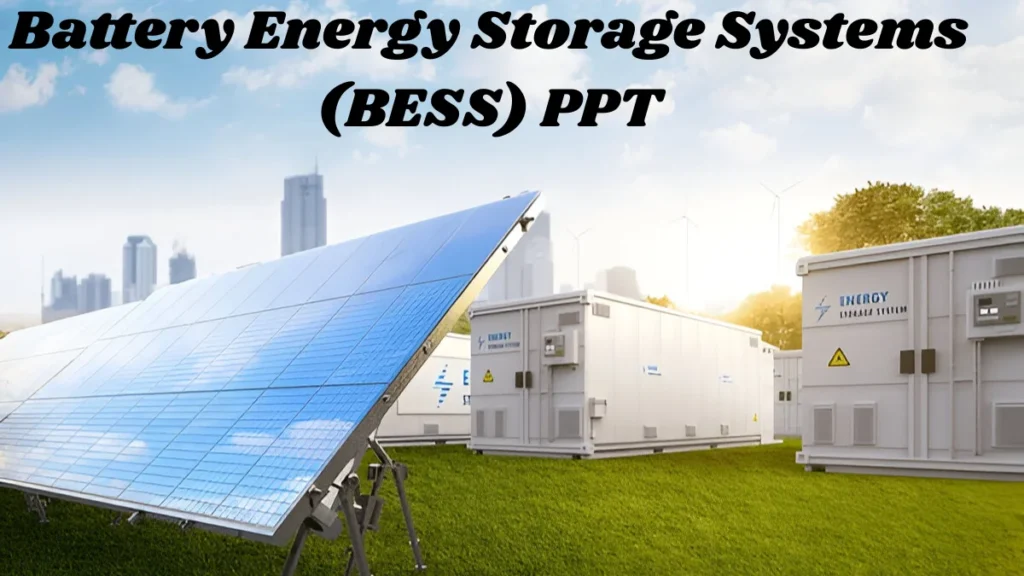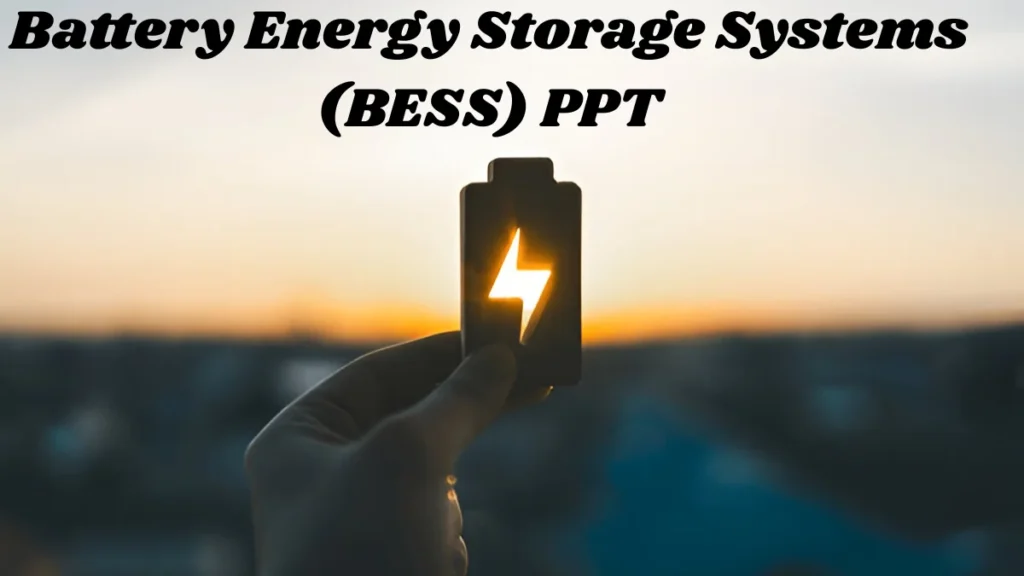
Table of Contents: battery energy storage systems bess ppt
Introduction: battery energy storage systems bess ppt
What is a Battery Energy Storage System?
Imagine storing electricity like you store water in a tank — that’s the basic idea behind a Battery Energy Storage System (BESS). It’s a system that captures energy when it’s plentiful (or cheap) and releases it when it’s needed most.
BESS typically consists of advanced rechargeable batteries that are charged by energy from the grid or renewable sources like solar or wind. They can then discharge that energy when there’s a demand, offering a flexible, smart, and efficient way to manage electricity.
Why Are BESS So Important Today?
With the global push for clean energy and the rise of intermittent renewable sources, we need a way to balance power supply and demand. That’s where BESS comes in. They help:
- Reduce blackouts
- Save on electricity bills
- Support the transition to clean energy

How BESS Work
The Core Components of a BESS
Let’s break it down. A typical BESS has several critical components:
Battery Packs
These are the heart of the system. Most use lithium-ion cells that store the actual energy.
Battery Management System (BMS)
Think of the BMS as the brain. It monitors the batteries, ensures safe charging/discharging, and prevents overheating.
Inverters and Control Units
Inverters convert the stored DC electricity into AC power that homes and grids use. Control units coordinate the entire system.
How Energy is Stored and Released
When there’s surplus energy (say, from solar panels during the day), it’s stored in the batteries. When demand peaks (like during the evening), the system releases that energy. Simple, right?
Types of Battery Technologies Used in BESS
Lithium-Ion Batteries
These are the most popular choice today due to their high energy density, longer life cycles, and falling costs.
Lead-Acid Batteries
Older but still used for short-duration applications. They’re affordable but not as efficient or long-lasting as lithium-ion.
Flow Batteries
A newer player, flow batteries use liquid electrolytes and can be scaled easily. Great for large installations!
Emerging Technologies
From sodium-ion to solid-state batteries, innovation is constantly brewing in the BESS world. These may solve today’s limitations like cost and recycling.
Applications of BESS
Residential Energy Storage
Homeowners can install BESS to store energy from rooftop solar systems, reducing dependence on the grid and lowering electricity bills.
Commercial and Industrial Use
Businesses use BESS to avoid peak demand charges and ensure backup power during outages.
Grid Stabilization
Utilities deploy large-scale BESS to manage frequency and voltage stability on the grid.
Renewable Integration
BESS allows solar and wind energy to be stored and used when the sun isn’t shining or the wind isn’t blowing.

Advantages of Battery Energy Storage Systems
- Flexibility: Use energy when and where it’s needed
- Reliability: Backup during outages
- Efficiency: Charge during low demand, discharge during peak
- Eco-friendly: Reduces reliance on fossil fuels
- Cost-saving: Minimizes energy bills over time
Challenges Facing BESS Deployment
- High Upfront Cost
- Battery Degradation Over Time
- Complex Installation Requirements
- Limited Recycling Infrastructure
- Safety Concerns (Overheating, Fire Risks)
How to Present BESS in a PPT (PowerPoint Presentation)
Key Slides to Include
- Introduction to BESS
- How BESS Works (Diagrams Help!)
- Types of Battery Technologies
- Real-World Applications
- Pros and Cons
- Future Trends
- Case Studies
- Summary and Q&A
Design Tips for an Effective BESS Presentation
- Use clean layouts with bullet points
- Add infographics and simple flow diagrams
- Keep text concise
- Use icons for components (batteries, inverters, etc.)
- End with FAQs or call-to-action
BESS Market Trends and Growth
Current Market Size
As of now, the global BESS market is worth over $15 billion and growing fast, thanks to the green energy push and tech advancements.
Future Projections
By 2030, the market could surpass $50 billion, driven by EV growth, government incentives, and more solar and wind projects worldwide.
Top Players in the BESS Industry
Leading Companies Globally
- Tesla Energy (Powerwall, Megapack)
- LG Energy Solution
- Samsung SDI
- Fluence
- BYD
Startups Making Waves
- Energy Vault (Gravity-based systems)
- Form Energy (Iron-air batteries)
- Ambri (Liquid metal batteries)
These innovators are reshaping the future of storage!

Government Policies and Support
Many governments now offer tax breaks, subsidies, and mandates for BESS adoption, especially for utilities and homeowners using solar power.
Environmental Impact of BESS
Positive Environmental Effects
- Reduces carbon emissions
- Minimizes fossil fuel dependency
- Supports grid stability for clean energy
Concerns About Battery Disposal
However, if not recycled properly, batteries can harm the environment. That’s why recycling and second-life applications are so important.
The Future of BESS Technology
BESS is expected to become smarter, cheaper, and more powerful. With AI and IoT integration, future systems will predict demand, optimize use, and last even longer. Exciting times ahead!
Conclusion: battery energy storage systems bess ppt
Battery Energy Storage Systems are not just tech jargon — they’re game changers for how we use and think about energy. From homes to grids, BESS play a crucial role in making renewable energy reliable and sustainable. If you’re preparing a BESS PPT, now you’ve got all the juice you need to make it awesome.
FAQs: battery energy storage systems bess ppt
1. What is the lifespan of a BESS?
Most BESS systems last 10–15 years, depending on usage and battery type.
2. Can I use BESS without solar panels?
Yes! BESS can be charged from the grid during off-peak hours and used during peak times.
3. Are BESS systems safe?
Modern BESS come with multiple safety layers, including thermal management and fire suppression.
4. Is lithium-ion the only battery used in BESS?
No, other types like lead-acid, flow, and even newer tech like sodium-ion are also used.
5. How big is the BESS market?
It’s currently over $15 billion and projected to triple by 2030!
